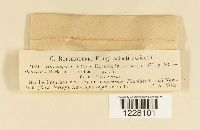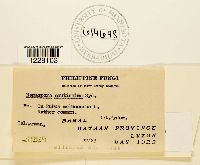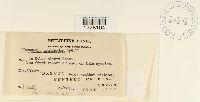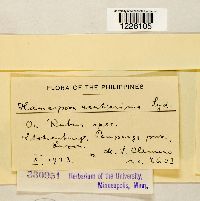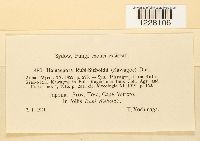University of Minnesota
http://www.umn.edu/
612-625-5000
http://www.umn.edu/
612-625-5000
Minnesota Biodiversity Atlas
Bell Museum
Dataset: MIN-Fungi
Taxa: Hamaspora
Search Criteria: excluding cultivated/captive occurrences
1
Page 1, records 1-7 of 7
Bell Museum fungi | |
MIN:Fungi | Hamaspora ellisii (Berk.) Körn. 16362[1228100]Ellis, J.B. 19361875-05-00 United States, New Jersey |
MIN:Fungi | Hamaspora ellisii (Berk.) Körn. 16363[1228101]Ellis, J.B. 4921 United States, New Jersey |
MIN:Fungi | Hamaspora acutissima P. Syd. & Syd. 614697[1228102]Clemens, M.S. 56421924-06-00 Philippines, Davao, Mt. Apo, Mindanao |
MIN:Fungi | Hamaspora acutissima P. Syd. & Syd. 614698[1228103]Clemens, Mary Strong 12281923-05-22 Philippines, Bataan, Luzon |
MIN:Fungi | Hamaspora acutissima P. Syd. & Syd. 614696[1228104]Clemens, M.S. 1126 Philippines, Benguet, Luzon, 1524m |
MIN:Fungi | Hamaspora acutissima P. Syd. & Syd. 330951[1228105]Clemens, M.S. 26031923-10-00 Philippines, Pampanga, Luzon |
MIN:Fungi | Hamaspora rubi-sieboldii (Kawagoe) Dietel 473152[1228106]Yoshinaga, T. 480 Japan, Tosa |
1
Page 1, records 1-7 of 7
Google Map
Google Maps is a web mapping service provided by Google that features a map that users can pan (by dragging the mouse) and zoom (by using the mouse wheel). Collection points are displayed as colored markers that when clicked on, displays the full information for that collection. When multiple species are queried (separated by semi-colons), different colored markers denote each individual species.

